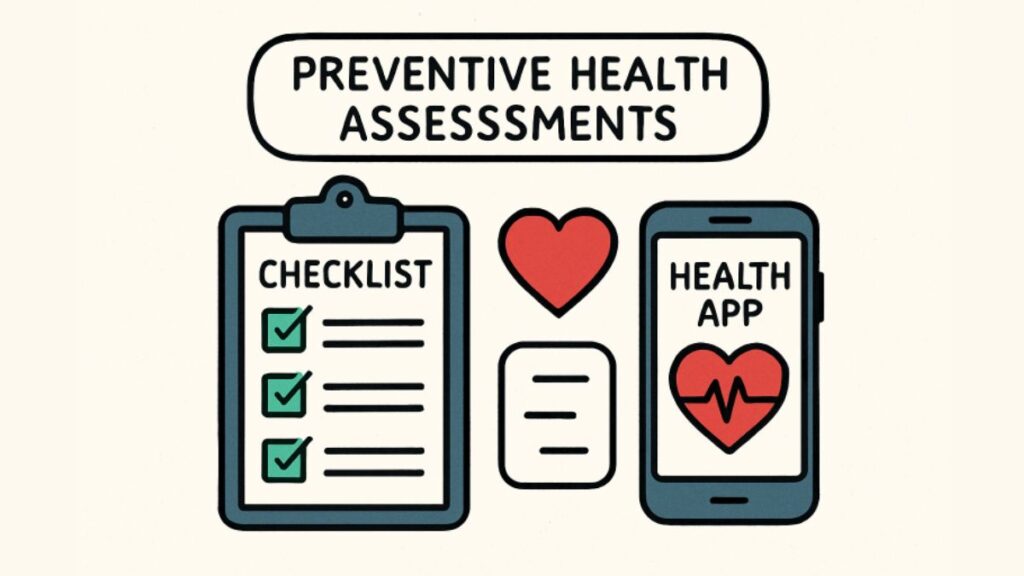Understanding Preventive Health Assessments
Preventive health assessments are the foundation of a proactive, long-term approach to well-being. These assessments go far beyond a traditional annual check-up; they comprise a systematic routine of physical exams, risk factor screenings, counseling, and vaccinations that collectively provide a comprehensive view of a person’s health status. Early identification of conditions such as hypertension, diabetes, heart disease, and various cancers fundamentally alters their outcomes, reducing mortality and allowing individuals to implement timely, targeted interventions.
Engaging in preventive assessments equips individuals with the knowledge necessary to make informed choices about their daily habits, nutrition, exercise, and overall lifestyle. By uncovering problems before symptoms appear, individuals can sidestep potential hospitalizations and invasive treatments. In today’s landscape, a growing number of people are turning to home-health assessment, which offers tailored evaluations within the comfort and privacy of their homes. This approach not only increases convenience but also ensures that regular health monitoring is accessible to those who may struggle to attend in-person appointments due to mobility, transportation, or time constraints. Ultimately, preventive care is not just a series of routine appointments; it’s a mindset, grounded in evidence-based practices designed to catch problems before they escalate. Whether it’s through standardized screenings, up-to-date immunizations, or personalized initiatives that reflect personal or family health histories, these assessments empower individuals to take an active role in their unique healthcare journeys.
Benefits of Regular Health Screenings
- Early Detection: Regular health screenings are a critical tool for identifying the onset of diseases long before significant symptoms appear. This is particularly important for chronic illnesses such as cancer, high blood pressure, or diabetes, where early detection can mean the difference between simple management and long, complex treatments. Early intervention can often halt or slow disease progression, ensure that therapies are more effective, and help patients maintain a significantly higher quality of life.
- Cost Savings: The economic benefits of preventive health assessments extend beyond individual patients, as they also relieve pressure on the larger healthcare system. By preventing severe complications and emergencies, regular screenings help reduce the need for costly surgeries, prolonged hospital stays, and expensive specialist care. When conditions are managed early, medications and interventions tend to be less intensive and less costly, resulting in pronounced cost savings for families, employers, insurers, and public health programs.
- Improved Quality of Life: Maintaining one’s health through regular screenings ensures not just longevity but also vitality and independence throughout life. When people actively engage in preventive care, they’re more likely to manage chronic conditions, avoid disabling complications, and stay socially and professionally active. Furthermore, preventive health services foster a culture of continuous care, motivating individuals to adopt healthy behaviors, follow medical advice, and seek help promptly when new symptoms arise, all of which contribute to a fuller, more satisfying life.
Technological Advancements in Preventive Care
The evolution of digital health technologies is revolutionizing the way preventive care is envisioned and delivered. Modern healthcare is now leveraging big data and artificial intelligence (AI) to process massive, complex data sets, identifying subtle correlations among lifestyle habits, genetic predispositions, and disease development. Providers can utilize AI-driven predictive models to forecast risks, personalize assessments, and deploy interventions more effectively than ever before, thereby fundamentally shifting the paradigm from reactive to proactive care.
Beyond data science, digital health tools such as mobile health applications and wearable devices empower patients to take ownership of their health. These technologies act as personal health assistants, sending reminders about vaccinations or screenings, tracking medication adherence, and facilitating remote communication with care teams. Importantly, telemedicine platforms now offer virtual visits, chronic disease monitoring, and even remote diagnostics, addressing both the urgent and routine needs of at-risk populations. The digital transformation enables a broader reach, particularly for patients residing in areas with limited medical infrastructure, and promotes more personalized, continuous preventive care.
Challenges in Accessing Preventive Services
Despite the ongoing advancements and clear benefits of preventive health assessments, a significant portion of the population still fails to receive these life-saving services. Data shows that roughly 27% of Americans are behind on essential immunizations and recommended screenings, leaving them exposed to conditions that could have been managed more easily or avoided altogether.
Multiple barriers impede the adoption of preventive care. Limited access to healthcare providers, particularly in rural or underserved urban areas, is a critical hurdle. Many individuals, especially those without reliable transportation or flexible work schedules, struggle to travel to clinics for routine care. High out-of-pocket expenses and gaps in insurance coverage discourage the pursuit of screenings for those already facing financial constraints. Furthermore, a lack of awareness and skepticism about the necessity of preventive services leads to underutilization. Cultural and language differences, along with mistrust or limited health literacy, exacerbate the problem in certain communities.
Strategies to Improve Preventive Health Outcomes
Enhancing Accessibility
Increasing access to preventive services requires innovative approaches to care delivery. Telemedicine, for instance, breaks down geographic and logistical barriers by connecting patients with health professionals remotely. The rise of mobile health clinics and the expansion of home-health assessments mean that individuals can be screened and assessed without leaving their homes, eliminating concerns about transportation, mobility, or conflicting obligations.
Leveraging Data Analytics
Health systems and insurers now use advanced data analytics to pinpoint at-risk populations and manage outreach more effectively. Predictive analytics scans through electronic health records and other data sources to identify individuals overdue for screenings or those with rising risk profiles. Automated reminders, personalized invitations for screenings, and risk-based interventions can be seamlessly triggered to ensure that no one falls through the cracks. This data-driven approach also allows for allocation of resources where they are needed most, making interventions more efficient and impactful.
Promoting Health Education
Public and personalized health education campaigns play a crucial role in bridging awareness gaps and promoting preventive behaviors. Culturally tailored messaging and multilingual resources help dispel myths, clarify guidelines, and inspire communities to prioritize screenings. When healthcare providers clearly communicate the importance and process of preventive assessments, patients are more likely to participate, benefiting not only themselves but also the larger public health environment.
Conclusion
Preventive health assessments are the foundation of effective healthcare systems, providing a strategic approach to reduce long-term costs while enhancing health outcomes across the population. By embracing technological innovations like artificial intelligence, expanding accessibility through in-home evaluations, and sustaining robust education campaigns, barriers can be addressed, and the benefits of prevention can reach more people than ever before. As the healthcare landscape continues to evolve, adopting a preventive mindset will lead to better-managed chronic diseases, fewer tragedies stemming from late-stage illnesses, and, ultimately, healthier lives for all generations to come.






